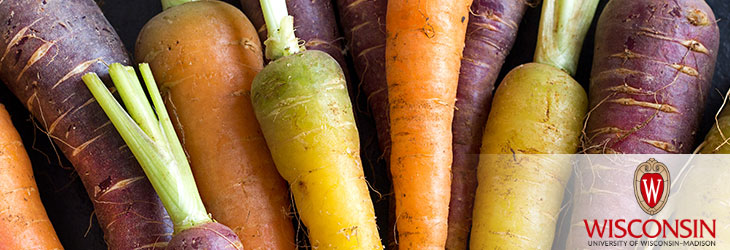Animals, Agriculture & Food

“Natural” Antioxidants Prolong Storage Life of Meat
WARF: P160260WO01
Inventors: Mark Richards, Wenjing Zhang, Jie Yin
The Wisconsin Alumni Research Foundation (WARF) is seeking commercial partners interested in developing a method of preserving meat tissues, including fish, poultry, pork and beef, using very low amounts of phospholipase A2 (PLA2) enzymes in combination with rosemary extract.
This novel combination outperformed synthetic antioxidants in a trial comparing color stability. Moreover, treated meat samples have been shown to remain palatable for up to 10 days longer than conventional products under refrigerated conditions.
Overview
Lipid oxidation is a major problem across meat products, pet food and rendering industries. Meat preservation methods are essential to preventing the development of off-colors or off-flavors that render products unpalatable. Indeed, off-odor and off-flavor development during refrigeration and frozen storage remains a major obstacle to consumer acceptance. While synthetic preservatives are widely used in some types of meat production (e.g., to stabilize pork sausage), consumers continue to seek a natural alternative.
The Invention
UW–Madison researchers have discovered an unexpected synergy between phospholipase A2 (PLA2) and rosemary extract, which can be used in combination to prolong the storage life of virtually any meat – including fish, fowl, pork and red meat as well as vegetarian meat analogs containing added protein heme. Even at very low concentrations (i.e., half the amount of rosemary used commercially today), the combination may inhibit lipid oxidation in all types of raw meat products.
Applications
- Preservation of meat products and meat analogs
- Pet food production
Key Benefits
- Prolonged storage life, color stability and palatability
- Effective at very low amounts
- Represents a “natural” alternative to synthetic antioxidants currently used in some meat production
Stage of Development
Treated samples of ground turkey and sausage showed improved color stability during light display. Moreover, in a trial the researchers directly compared their natural antioxidant system to that of a synthetic antioxidant system that is used in current industry practice. The natural antioxidant did better in maintaining desired color compared to synthetic at all time points of frozen storage prior to light display. The trial was conducted at the pilot plant of a meat processor, so the synthetic antioxidant system is considered a valid match to current industry practice.
While the researchers hoped for comparable results as compared to the synthetic system, they actually saw an improvement. This, coupled with consumer preference for natural antioxidants, make this natural system an advantageous commercial option.
While the researchers hoped for comparable results as compared to the synthetic system, they actually saw an improvement. This, coupled with consumer preference for natural antioxidants, make this natural system an advantageous commercial option.
Additional Information
For More Information About the Inventors
For current licensing status, please contact Emily Bauer at [javascript protected email address] or 608-960-9842